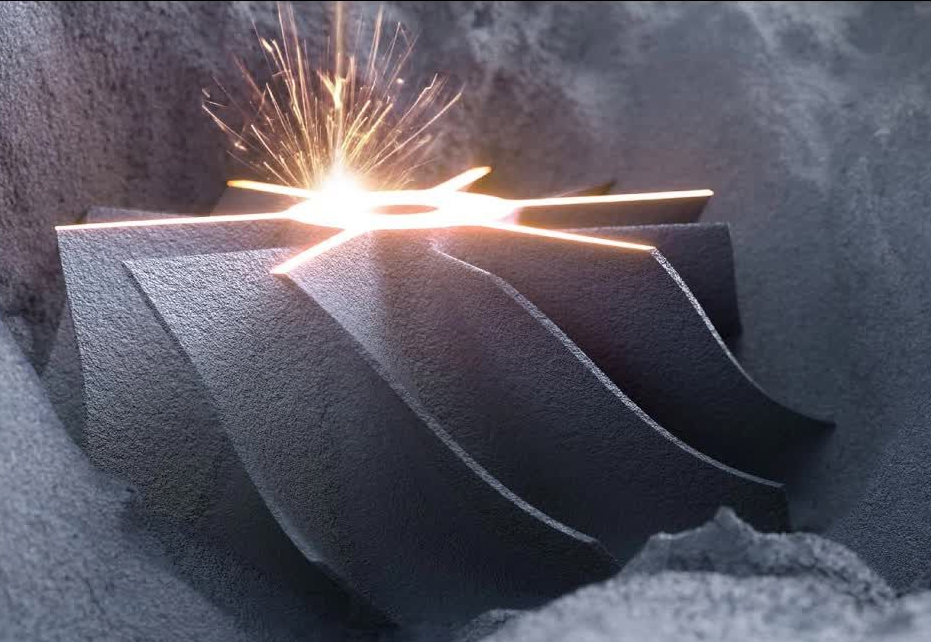Selective Laser Sintering
Laser sintering is a popular and versatile 3D printing technology thanks to its high precision, design freedom, and wide range of production-grade materials. Suitable for all stages of the production lifecycle, from prototyping to small series or custom manufacturing, laser-sintered parts need no support structures, making it possible to produce even the most complex geometries.
Selective Laser Sintering (SLS)
Selective laser sintering (SLS) is a powerful 3D printing technology that produces highly precise and durable components capable of being utilized straight in end-use, low-volume manufacturing, or rapid prototyping. SLS can construct components wholesale without support structure needs. SLS products are largely nylon and An additive manufacturing layer technology, selective laser sintering includes making use of a high-power laser (for instance, a carbon dioxide laser) to fuse little particles of plastic powders right into a mass that has a desired three-dimensional shape. The laser selectively fuses powdered material by scanning cross-sections generated from a 3-D digital description of the part (for example from a CAD file or check information) on the surface of a powder bed. After each cross-section is checked, the powder bed is decreased by one layer thickness, a brand-new layer of material is applied on top, and also the selective laser sintering procedure is repeated till the part is finished.

How Does Selective Laser Sintering (SLS) 3D Printing Work?
The EOS SLS 3D printer uses a laser to melt polymer powder and fuse it into a solid 3D printed part. SLS is part of the Laser Powder Bed Fusion (LPBF), one of the most advanced and reliable technologies in 3D printing.
Using a CAD design model, the laser melts the plastic material precisely at the predefined points in the powder bed. The technique requires no support structures, as the unfused powder supports the part during printing. After completion of the melting process, a new layer of powder is applied. This process repeats layer by layer until the part is completed.
SLS is a new high end method that has been primarily used for rapid prototyping and small batch production of components. Within the process of commercialization of selective laser sintering, the production tasks are being expanded enabling new design options for a wide range of products.
Why Use SLS?
See how SLS uses actual thermoplastic and elastomeric materials to produce parts with good mechanical properties. Final parts can be used to test future injection molding designs or as functional, end-use components.
Experience the Advantages of SLS 3D Printing
SLS printing offers numerous advantages, making it an ideal choice for various applications. The key benefits of our SLS 3D printing services include the following:
- Design freedom: Bring your most intricate designs to life. The layer-by-layer construction process surpasses conventional manufacturing techniques by making it possible to produce complex geometries, internal cavities, and organic shapes.
- Versatility: Our SLS printers build parts with Nylon 12 PA at various layer thicknesses.. This versatility opens up endless possibilities for creating functional prototypes, end-use parts, and customized products tailored to your specific requirements.
- Speed and efficiency: SLS printing has rapid production capabilities. By eliminating the need for tooling or molds, we significantly reduce lead times, allowing you to accelerate your product development cycle. Bring your innovations to market faster with our 3D printing solutions.
- Exceptional quality: Our SLS printing services deliver superior accuracy and surface finish. We ensure that we faithfully replicate every detail of your design. The durability and strength of SLS-produced parts make them suitable for demanding applications in various industries.
Technical specifications
| Description | |
|---|---|
| Maximum build dimensions | Dimensions are unlimited as components may be composed of several sub-parts.
The maximum build envelope is 630 x 330 x 550 mm |
| Standard accuracy | ±0.3% (with a lower limit on ±0.3 mm) |
| Layer thickness | 0.12 mm |
| Minimum wall thickness | 1 mm, but living hinges are possible at 0.3 mm |
| Surface structure | Unfinished parts typically have a grainy surface but various post-production finishes are possible |
Standard Material Properties
This data is provided for the convenience of our customers. It does not on its own represent a sufficient basis for any part design, nor does it provide any agreement about or guarantee the specific properties of a product or part or the suitability of a product or part for a specific application. It is the
responsibility of the producer or customer of a part to check its properties as well as its suitability for a particular purpose. This also applies to any possible intellectual property rights as well as regional laws and regulations. The data are subject to change without notice.
For a complete list of data sheets for our nylon product offerings, please click the material links below.
- Unfilled white nylon
- Glass-filled white nylon
- Carbon-filled nylon
- Aluminum-filled nylon
- Flame retardant nylon
- Thermoplastic elastomer
Instant quotes on 3D-printed parts
RJCmold is standing by to discuss your 3D printing needs. We are eager to help you understand our rapid prototyping services and how we can bring your ideas to life. With the power of 3D printing in our grasp, we can help you unlock new possibilities for your business or project. Let RJCmold be your trusted partner in the world of rapid prototyping.

